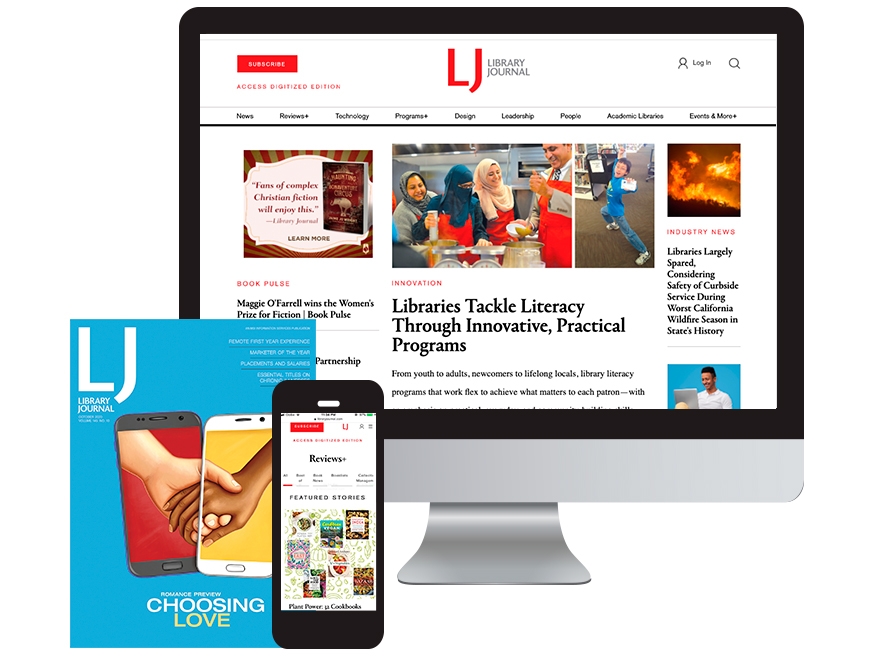Board Barriers | Editorial
While exact demographics are hard to come by, the informal consensus seems to be that members of most public libraries’ board of trustees or directors are largely white, well-off, and older. Meanwhile, the communities they represent are often far more diverse.
Trustees must represent their whole communities
While exact demographics are hard to come by, the informal consensus seems to be that members of most public libraries’ board of trustees or directors are largely white, well-off, and older. Meanwhile, the communities they represent are often far more diverse. As the library field increasingly recognizes the importance of equitable representation among not just staff, but librarians; not just librarians, but managers; and not just managers, but top leadership; we must not forget representation on the board.
As the ultimate policy-setting and leadership-hiring authority, it’s crucial that the library board be of and by, not just for, all the people that the library serves. As the saying goes, “nothing about us, without us.” While the law mandates public meetings, and many boards are diligent about seeing public input above and beyond the requirements, there’s still a crucial distinction between merely having a voice and having a vote.
To achieve that requires reexamining “how we’ve always done it” for structural barriers to participation. Scheduling is one such issue. Daytime meetings, for example, favor retirees and those who don’t work outside the home or who have flexible schedules. Friday nights and Saturdays exclude Orthodox Jews. While it’s not possible to optimize for everyone, varying the schedule ensures no one always gets left out.
Examine the total time requirement too; is it feasible for someone with a full time job and family? Where are meetings held? Is the space accessible to wheelchair users? Is it nearer one side of town than the other? On public transit routes? Are meetings captioned or interpreted in sign language? Is there an audio induction loop?
Childcare is another potential barrier. Children’s services are crucial to public libraries’ mission, but parents are often pressed for both time and money. Providing childcare during meetings shows their contribution is valued, as well as making it practically possible.
Remote meetings, popularized during the pandemic, are likely to continue, at least in hybrid form, as they make participation accessible to those for whom travel is a burden. However, they can be less accessible to those without broadband connections. Can the library provide hotspot and device loans to those who want to attend?
How are new members recruited to an appointed board, or asked to run for an elected one? If informally through the social networks of existing members, valuable potential contributors may be overlooked. When librarians Lina Bertinelli, Madeline Jarvis, Kathy Kosinski, and Tess Wilson conducted a national survey identifying barriers to board service, one major reason millennials didn’t serve was they hadn’t been asked. Even something as simple as how meeting notices and minutes are posted—online or in person? In what languages? Video or transcript?—can impact who knows about the board’s meetings and feels welcomed to join in.
A few libraries even require members of the board to make a donation, an even higher bar. The rationale for this practice, more common among nonprofits, is that it demonstrates commitment. But commitment should not come at the cost of cultural heterogeneity. Given that nearly 40 percent of Americans don’t have $400 for an emergency, a donation requirement effectively shuts out nearly half of library users from library governance.
Structural barriers to board membership aren’t just a loss for the individuals shut out. The loss of their perspectives, and those of their friends and neighbors, weakens the board’s ability to effectively understand and deliver what patrons need. And when there’s controversy or a tough call to be made, it weakens the board’s credibility with community members who don’t see enough, if any, people at the table who share their lived experience.
Not every board will be able to address these changes, if needed, all at once. Some may require approval from local government; others will require additional funding. Some changes may not be feasible or even desirable in every locale. The key is to look for who is not present and ask why; to apply the equity and inclusion lens that more libraries are learning to use for staff and patrons to governance too.
RELATED
Create a Free Account
Gain access to limited free articles, news alert, select newsletters, podcasts and some daily games.
-->Already have an account? Log In






Add Comment :-
Comment Policy:
Comment should not be empty !!!